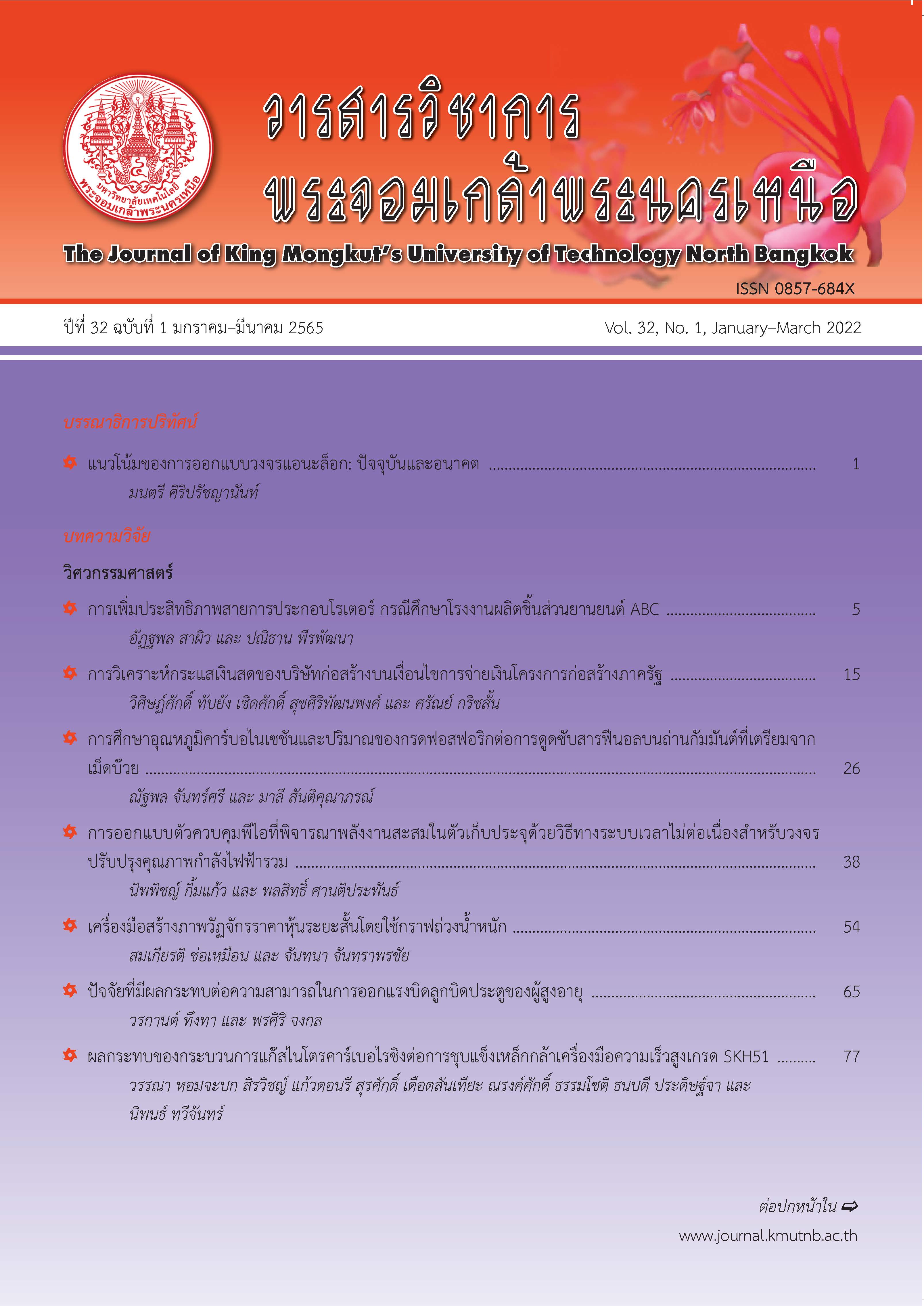การรู้จำท่าทางมือสำหรับตรวจจับความมีชีวิตของผู้ใช้แบบทันทีทันใดในแอปพลิเคชันโทรศัพท์เคลื่อนที่โดยใช้การเรียนรู้เชิงลึก
Main Article Content
บทคัดย่อ
ระบบระบุตัวตนด้วยใบหน้าซึ่งเป็นที่นิยมใช้กันในปัจจุบันโดยเฉพาะในแอปพลิเคชันบนโทรศัพท์เคลื่อนที่สมาร์ทโฟนนั้น มีจุดอ่อนที่สามารถถูกโจมตีได้ด้วยวิธีการต่าง ๆ เช่น การใช้รูปภาพใบหน้าสองมิติหรือใช้แบบจำลองใบหน้าที่พิมพ์ด้วยเครื่องพิมพ์สามมิติมาแสดงที่หน้ากล้องเพื่อหลอกระบบว่าเป็นใบหน้าของบุคคลนั้น ๆ เพื่อป้องกันการถูกโจมตีในลักษณะดังกล่าวแอปพลิเคชันส่วนใหญ่จึงมักมีการตรวจสอบด้วยวิธีการอื่นเพิ่มเติม เพื่อให้แน่ใจว่าใบหน้าที่เห็นปรากฏอยู่หน้ากล้องนั้นเป็นใบหน้าของบุคคลจริงที่มีชีวิต หรือเป็นใบหน้าที่ไม่มีชีวิตของภาพถ่ายหรือรูปปั้น ซึ่งกระบวนการนี้เรียกว่า “การตรวจสอบความมีชีวิตของผู้ใช้งาน” งานวิจัยชิ้นนี้มีวัตถุประสงค์เพื่อ (1) ศึกษาความเป็นไปได้ของการนำท่าทางสัญลักษณ์มือมาใช้ในการตรวจสอบความมีชีวิตของผู้ใช้งาน (2) เพื่อเสริมความปลอดภัยให้กับระบบระบุตัวตนด้วยใบหน้าของแอปพลิเคชันในโทรศัพท์เคลื่อนที่สมาร์ทโฟน โดยนอกจากการทดลองและพัฒนาแบบจำลองการเรียนรู้เชิงลึกที่สามารถแยกแยะท่าทางสัญลักษณ์มือหกท่าได้แล้ว ผู้วิจัยยังได้ทำการพัฒนาระบบต้นแบบบนโทรศัพท์เคลื่อนที่สมาร์ทโฟนที่รวมเอาระบบตรวจจับใบหน้าเข้ากับการใช้ท่าทางของมือเพื่อตรวจสอบความมีชีวิตของผู้ใช้ ทั้งนี้ระบบต้นแบบดังกล่าวถูกนำไปทดลองใช้เพื่อศึกษาประสบการณ์การใช้งานจากผู้ใช้จำนวน 40 รายในช่วงอายุต่าง ๆ กัน
Article Details
บทความที่ลงตีพิมพ์เป็นข้อคิดเห็นของผู้เขียนเท่านั้น
ผู้เขียนจะต้องเป็นผู้รับผิดชอบต่อผลทางกฎหมายใดๆ ที่อาจเกิดขึ้นจากบทความนั้น
เอกสารอ้างอิง
[2] M. Nguyen. (2017, September). Vietnamese researcher shows iPhone X face ID ‘hack’, Reuters. [Online]. Available: https://www.reuters.com/article/us-apple-vietnam-hackidUSKBN1DE1TH
[3] C. Kerdvibulvech, “Human hand motion recognition using an extended particle filter,” in Proceedings AMDO 2014: Articulated Motion and Deformable Objects, 2014, pp. 77–81.
[4] W. Abadi, M. Fezari, and R. Hamdi, “Bag of Visualwords and Chi-squared kernel support vector machine: A way to improve hand gesture recognition,” in Proceedings Proceedings of the International Conference on Intelligent Information Processing, Security and Advanced Communication, 2015, pp. 1–5.
[5] W. Wu, M. Shi, T. Wu, D. Zhao, S. Zhang, and J. Li, “Real-time hand gesture recognition based on deep learning in complex environments,” presented at the Chinese Control And Decision Conference (CCDC), Nanchang, China, 2019.
[6] P. S. Neethu, R. Suguna, and D. Sathish. “An efficient method for human hand gesture detection and recognition using deep learning convolutional neural networks,” Soft Computing, vol. 24, pp. 15239–15248, 2020.
[7] M. Rungruanganukul and T. Siriborvornratanakul, “Deep learning based gesture classification for hand physical therapy interactive program,” in Proceedings HCII 2020: Digital Human Modeling and Applications in Health, Safety, Ergonomics and Risk Management. Posture, Motion and Health, 2020, pp. 349–358.
[8] V. Bazarevsky and F. Zhang. (2020, September). On-Device, Real-Time Hand Tracking with MediaPipe. [Online]. Available: https://ai.googleblog.com/2019/08/on-device-realtime-hand-tracking-with.html
[9] C. Kerdvibulvech, “A methodology for hand and finger motion analysis using adaptive probabilistic models,” Eurasip Journal on Embedded Systems, vol. 18, 2014.
[10] V. Bazarevsky, Y. Kartynnik, A. Vakunov, K. Raveendran, and M. Grundmann, “BlazeFace: Sub-millisecond neural face detection on mobile GPUs,” presented at CVPR Workshop on Computer Vision for Augmented and Virtual Reality, Long Beach, CA, USA, 2019.

